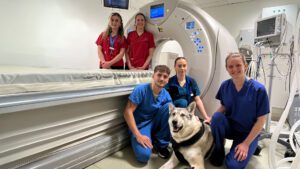Summary
Tumours of the skin and subcutaneous tissues are the most common in dogs, in which it accounts for one third of all tumours, and the second most common in cats (1/4 of all tumours) after lymphoid tumours. By order of decreasing frequency, cutaneous tumours of dogs include mast cell tumours (19%), hepatoid adenoma and adenocarcinoma (10%), lipoma (7%), sebaceous hyperplasia and adenoma (7%), histiocytoma (7%), squamous cell carcinoma (6%), melanoma (6%), fibrosarcoma (6%), basal cell tumours (5%) and hemangiopericytoma/nerve sheath tumours (4%)1. In cats, the 5 most frequently encountered cutaneous tumours are basal cell tumours (20%), mast cell tumours (17%), fibrosarcomas (17%), squamous cell carcinomas (11%) and sebaceous hyperplasia and adenomas (3%)1. For most of these tumours, the mainstay of treatment is complete surgical excision. For the surgeon, it often comes down to the ability to reconstruct the resulting defect. Reconstructive surgery therefore is in many cases the most challenging part of the surgery. The exhaustive review of these tumours types and behaviour is beyond the scope of this text. Notions of reconstructive surgery in oncology will be discussed elsewhere in this seminar. The particular cases of feline injection-site sarcomas and canine cutaneous and subcutaneous mast cell tumours will be presented.












